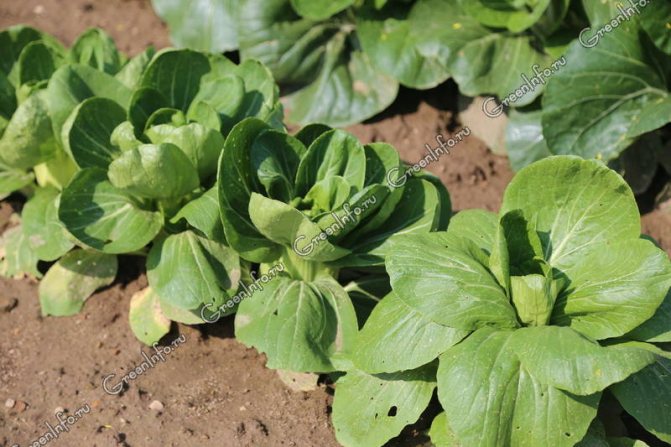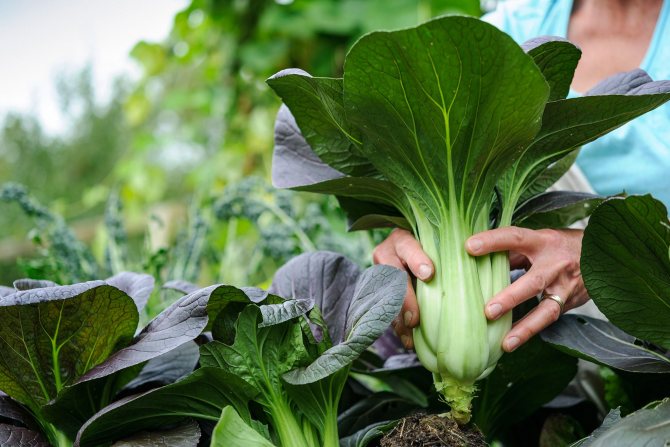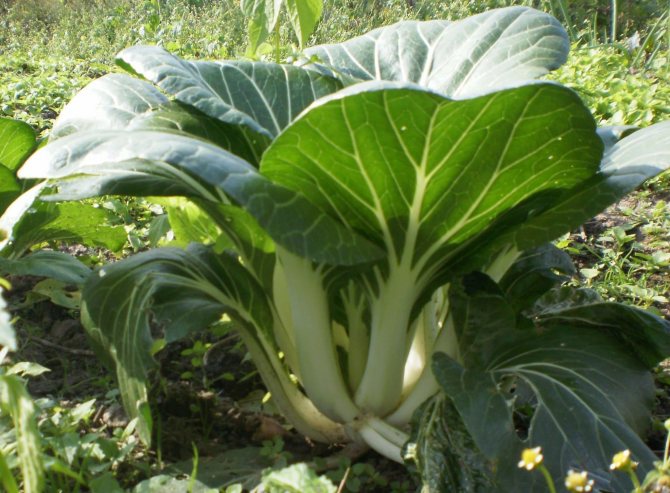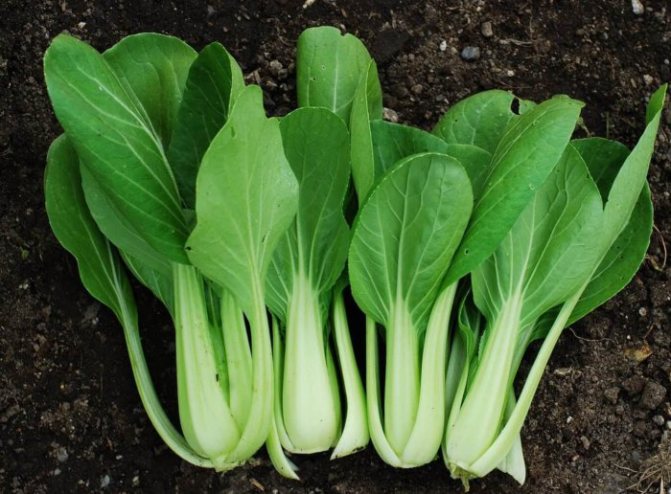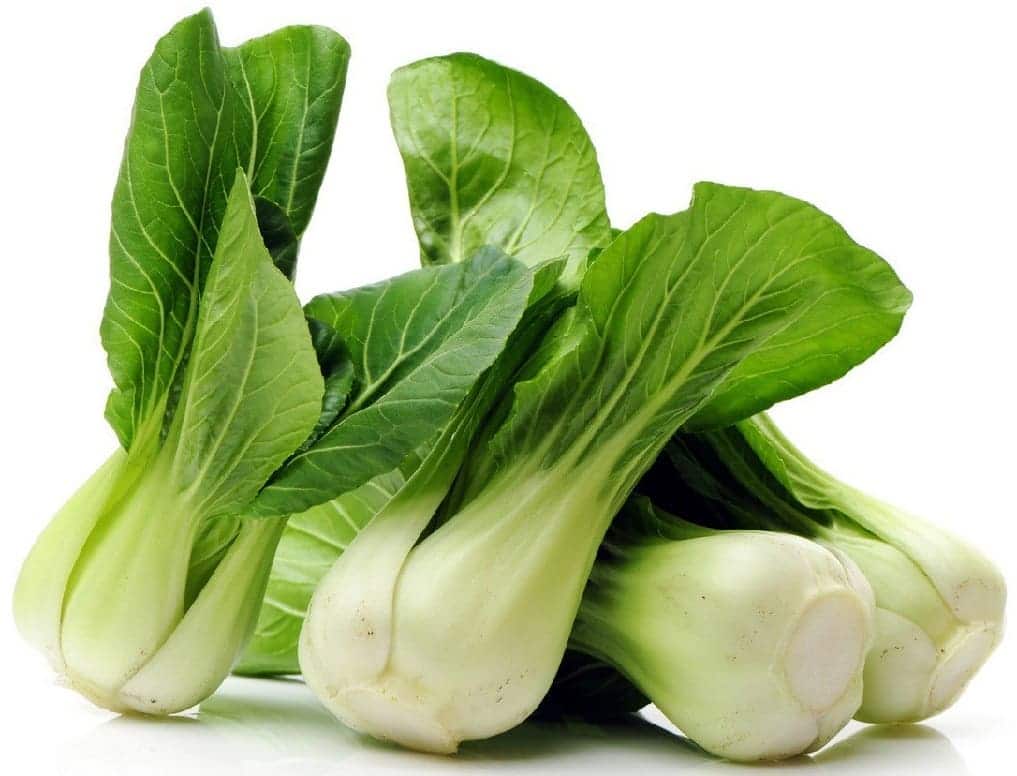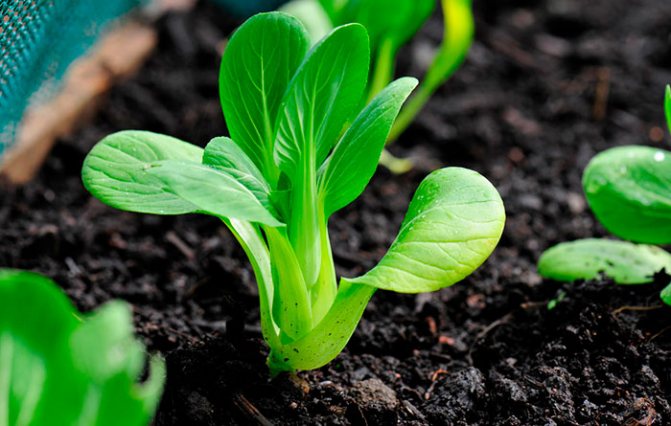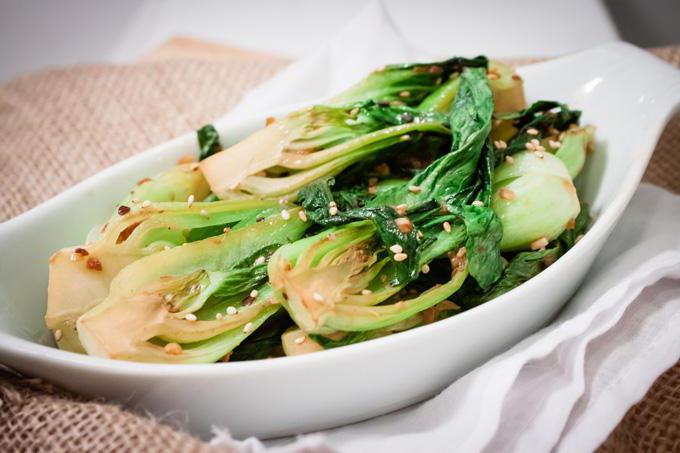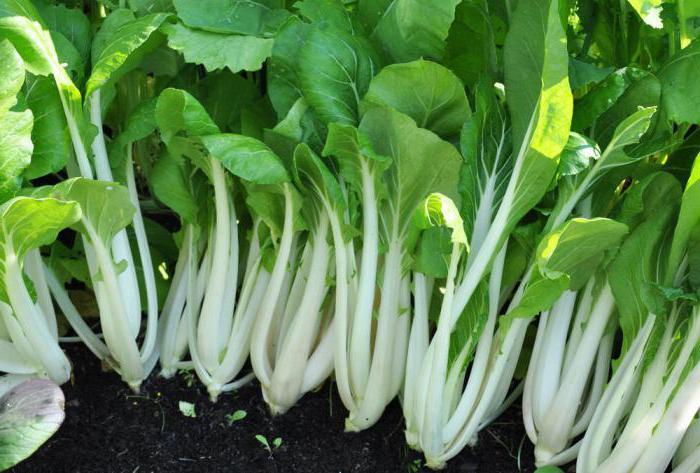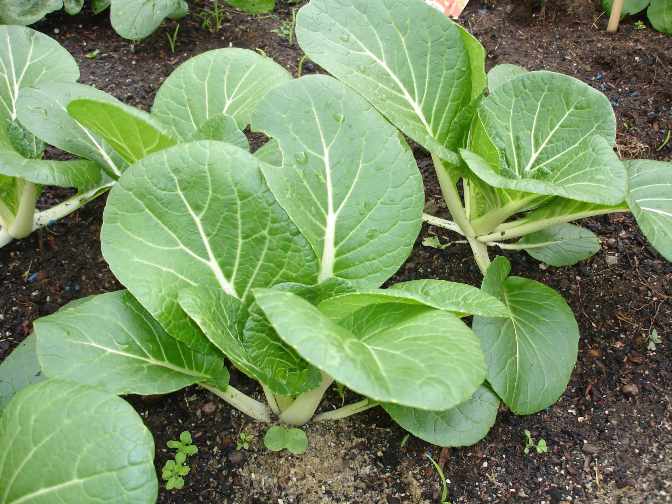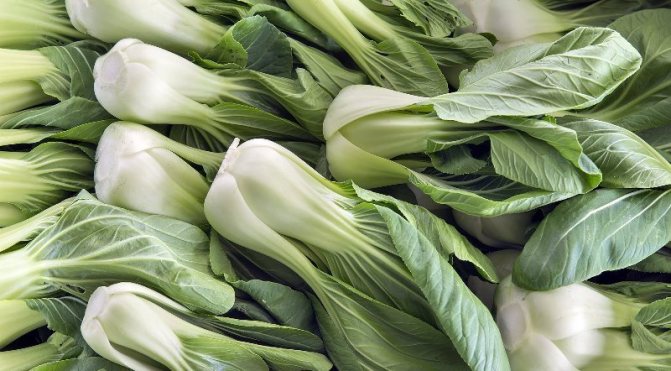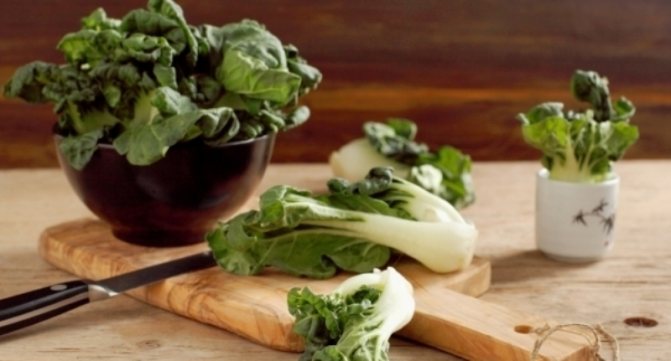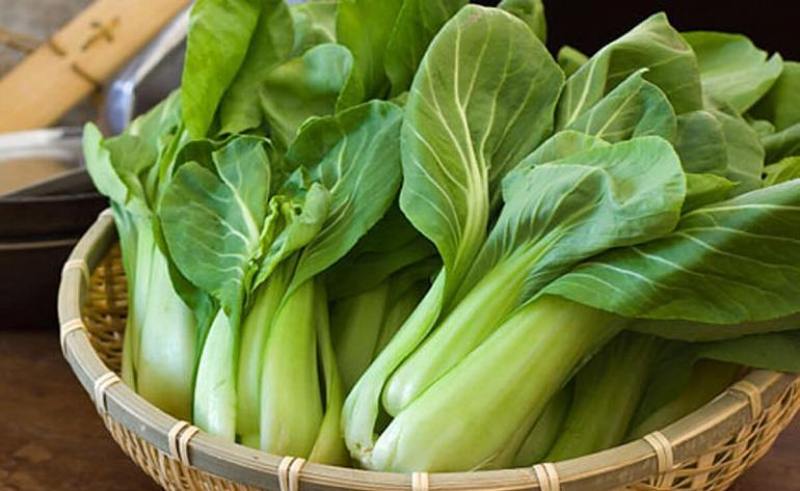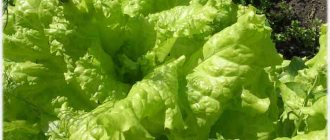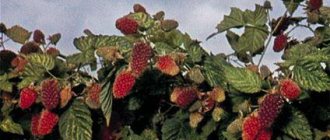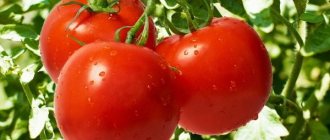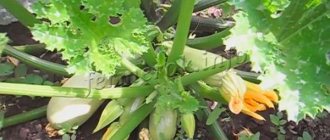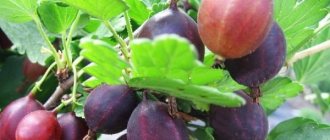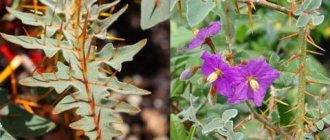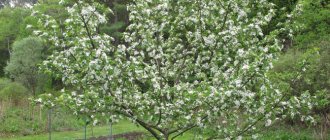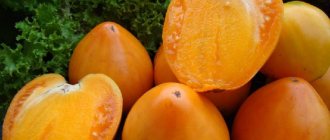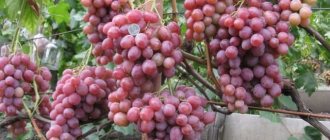One of the oldest representatives of vegetable crops is pak-choy cabbage, originally from Asia. The first who began to cultivate it were the Chinese, and over time, the Europeans appreciated its useful properties. Pak-choi is considered a close relative of Peking cabbage, but has fundamental differences with it, both in appearance and taste. Currently, three types of vegetables are known, different in color, size, ripening time, etc. When buying seeds of a certain variety, they pay attention to those that are most suitable for specific growing conditions.
Description of the Chinese cabbage Pak-choi
Pak-choi is a relative of Peking cabbage, but it has many differences - both external and taste. Her leaves are darker, rougher, with smooth edges. The taste is more spicy and piquant.
Pak-choi looks very impressive in the garden. Cabbage leaves form a beautiful rosette that resembles a bizarre vase. It reaches a height of 20-50 cm, and reaches 45 in diameter. Petioles and leaves can have different colors. In the first year, Pak-choy cabbage forms only a rosette, in the second year it releases a tall flower. After flowering, many seeds appear.
The stalks of cabbage are convex, thick, pressed. Usually their mass is one third of the whole plant. They are very crispy, juicy, and taste like spinach.
When choosing a cabbage, you need to pay attention to the color of the leaves and their elasticity. They should be bright, juicy, not sluggish.
You can see the Pak-choi cabbage in the photo.
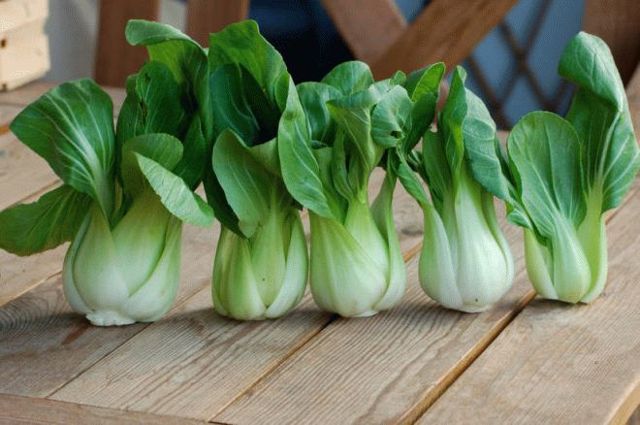
Young small rosettes, which are considered more tender, are especially appreciated.
Harvesting and storage
The pak choy is harvested as the vegetable ripens. The first cabbage can be tasted 3-3.5 weeks after planting. You can remove the vegetable from the ground completely, leaving about 2 cm at the root, or you can tear off individual leaves and immediately eat them. Interestingly, new young leaves can reappear from the cut plant.
The best time to harvest Chinese cabbage is in the morning, when it is saturated with moisture as much as possible. It is advisable to make dishes from fresh leaves, but if you need to save the plant for later, it is washed, dried and hermetically wrapped in plastic wrap. In this state, cabbage will retain its nutritional and taste qualities for a week.
It is better to harvest the entire pak-choy crop before the plant throws out the arrow. After that, the cabbage leaves become harder and less juicy. Overexposed is a vegetable that is 45-50 days old after appearance. You can no longer eat it.
Pros and cons
Chinese cabbage has many benefits:
- Ripens quickly - you can eat in a month.
- Differs in disease resistance.
- It is unpretentious - unlike the white one: it is not afraid of cold weather, it can tolerate small frosts not lower than -4 ° C, it is not picky about soils, it does not require careful preparation of the beds for planting.
- It is rich in vitamins, including A, B1, B2, C, PP, K. It contains iron, potassium, magnesium, calcium, phosphorus, as well as citric acid, pectin, fiber, bioactive elements.
- Low-calorie - contains only 13 kcal per 100 g.
- It is actively used in cooking - it is fried, stewed, baked, pickled, boiled. Salads and various savory snacks are prepared from it.
- It looks very impressive on the garden bed: its leaves form a beautiful rosette, which resembles a bizarre vase.
Pak-choy practically has no minuses and contraindications for use, or they are very insignificant.
Growing features
Pak Choi cabbage is suitable for growing on almost any type of soil. It does not require special and careful care. However, if certain nuances are observed, the yield can be increased.
Watering and soil care
Watering bok-choy should be done until the plant completely takes root at the planting site (we wrote about this in the previous section).
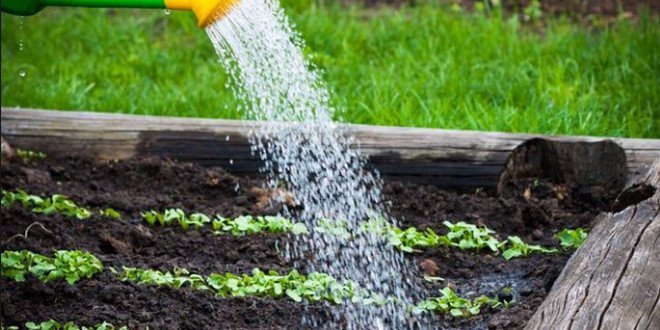

After that, water only in cases where precipitation does not fall for a long time (two weeks or longer). In such cases, 15-20 liters of warm water should be poured per square meter of soil.
Did you know? The famous traveler James Cook argued that only sauerkraut saved his sailors, expelling diseases from the body. In those distant times, not a single ship went sailing without a supply of sauerkraut.
The plant needs to be hilled for the best yield. This is done 20-25 days before harvest.
Before hilling, sprinkle the soil with crushed ash. If there is a lot of weed on the site, then it needs to be weeded.
Top dressing of Chinese cabbage
When caring for a Pak Choi, there should be absolutely no difficulties. The best option for plant nutrition is the use of the necessary organic and mineral fertilizers.
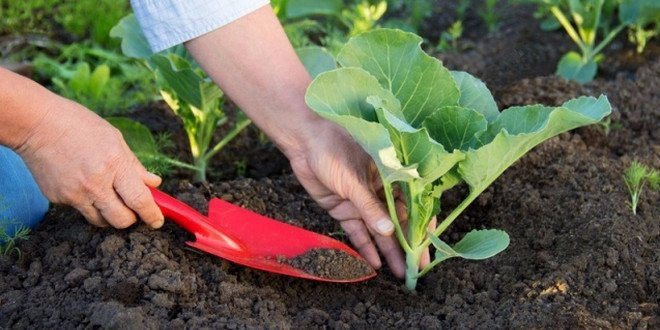

It is necessary to observe the amount of fertilizer per square meter so as not to harm the cabbage. Otherwise, it may die or lose its taste and useful properties.
For feeding, you can use ammonium nitrate. You can also apply 20 grams per square meter of potash fertilizer.
The same proportions g / m² are observed when adding superphosphates. Wood ash can serve as a substitute for all of the listed chemical fertilizers.
It is better to refrain from applying nitrogenous fertilizers (since even if the cabbage adds in growth, it will lose its taste).
More about the features of pak choy care
The culture is prone to the formation of arrows and flowering, therefore, when growing, you need to take into account some of the biological characteristics of cabbage.
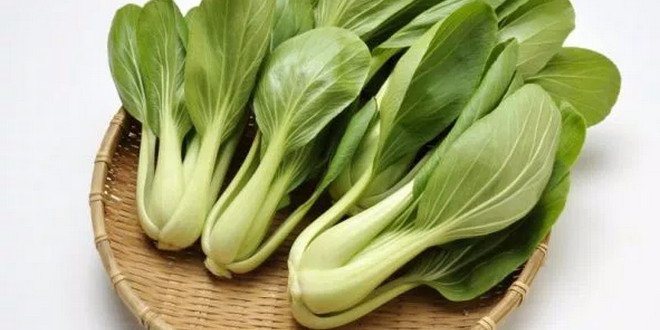

The processes of formation of arrows and flowering are usually observed with a constant lengthening of daylight hours. To avoid this, some agronomists advise land pak-choy not earlier than July.
For better yields, the soil around the cabbage can be mulched with rich compost or grass cuttings. This will keep moisture better (this is especially necessary during dry periods of summer).
The yield of the Pak-choy collard
This indicator may differ depending on the Pak-choy variety. The high-yielding ones include the following (in kg / sq. M):
| Variety | Kg / sq. m |
| Swallow | 10 |
| Alyonushka | 9 |
| In memory of Popova | 10 |
| Four seasons | 7,5 |
| Peahen | 10 |
| Swan | 5-7,5 |
Less productive varieties of Pak-choi cabbage:
| Variety | Kg / sq. m |
| Vitavir | 6,2 |
| Goluba | 6 |
| Beauty of the East | 6 |
| Corolla | 5 |
| Chill | 6,5 |
| Yuna | 5 |
| Chingensai | 3 |
| Lynn and Maggie | 3,8 |
| Purple miracle | 2 |
| Vesnyanka | 2,7 |
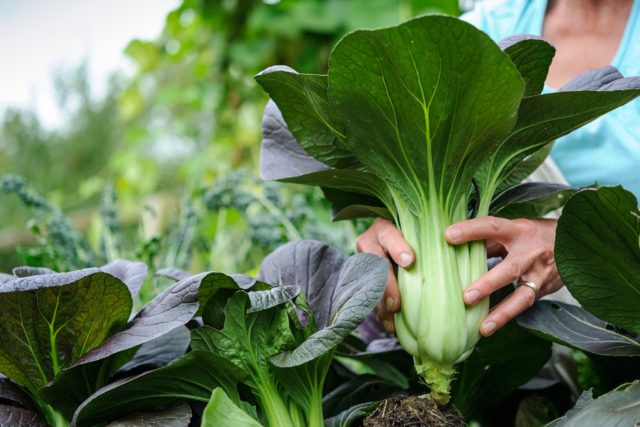

Some varieties of cabbage are highly productive.
General information about culture
Pak-choy cabbage (sometimes called bok-choy) belongs to the Cruciferous family and in most cases is grown as an annual plant. If the cabbage is left for the second year of life, then it will give a flower arrow, with which you can then collect seeds. The plant forms a rosette of leaves that can be up to 65 centimeters long. The diameter of the rosette is up to 45 cm. The leaves are attached on white or green petioles.
Interesting! Pak-choi is used in modern cooking as an addition to salads or as an excellent side dish for meat dishes.Cabbage contains valuable trace elements, vitamins C, K, PP, A, B1 and B2, lysine, pectin, citric acid and special enzymes of plant origin, which make this product indispensable in dietary nutrition. Eating pak choy in food increases immunity, stimulates the work of the gastrointestinal tract, pancreas and liver, strengthens the tone of the whole body, removes toxins and harmful cholesterol.
Cabbage of this species is characterized by increased germination, resistance to cold, early maturity. In one season, you can get 2-3 harvests, since the plant ripens in just 30 days. The full growing cycle for most Pak-choi varieties is 50–55 days. Bok choy tastes like spinach, with pungent notes of mustard and a slightly spicy aroma.
Growing and leaving of the Pak-choi Chinese cabbage
For growing Pak-choi, a well-lit area is chosen from seeds where precipitation does not stagnate. It is recommended to prepare a bed for spring sowing in the fall. It's good if beans, pumpkin, tomatoes, cucumbers grew here before.
Fertilizers must be applied to the soil. For each square meter, you will need half a bucket of humus, 1 tbsp. l. potassium sulfate, 2 tbsp. l. superphosphate. After making the ground, dig up to the depth of the shovel bayonet. For acidic soils, you need chalk, dolomite flour or hydrated lime.
In the spring, the beds for cabbage should be loosened, leveled, and not too deep grooves should be formed at a distance of 30 cm from each other. Water the soil and plant the seeds to a depth of about 1 cm. Before planting Pak-choy cabbage seeds, in about two days, it is recommended to treat them with a solution of microelements so that they germinate better.
After the seedlings have two leaves, they must be thinned out so that the distance between them is about 30 cm.
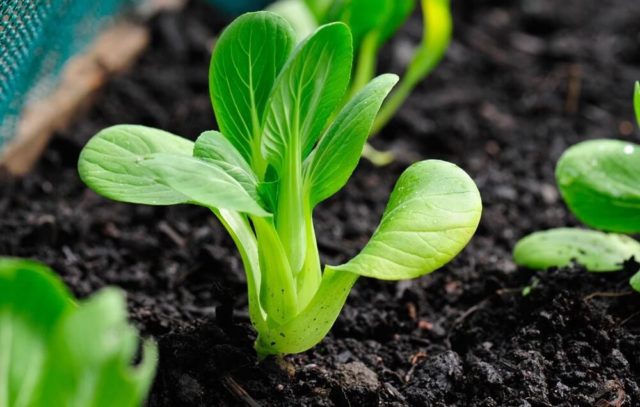

If you want to see cabbage on the table as early as possible, it is better to grow it in seedlings.
To grow seedlings, well-moistened seeds are sown in a container with soil prepared in advance. Sowing time for cabbage depends on the climate of the region. It is usually held from late March to mid-April. If the seeds of Pak-choi cabbage are immediately planted in individual containers, you will not need to pick. Usually 2 seeds are placed in one pot, after germination a more powerful sprout is left.
Pak-choi needs regular watering, thanks to which the stalks become juicy. If the soil is constantly dry, the cabbage will be tasteless and rough in texture. But excessive moisture is not recommended, the moisture in the ground should be in moderation, otherwise the plant may begin to rot.
Early ripe cabbage does not need fertilization if it was applied during the planting period. On humus-poor soils, 2 dressings are carried out. These are usually natural fertilizers. A solution of cow dung (1 to 10) with an admixture of wood ash works especially well on Pak-choi.
Attention! To avoid weeds, it is recommended to add mulch to the beds. It can be straw, pulled out weeds, rotten sawdust.
After a month, you can have low-growing early varieties of Pak-choy cabbage on the table, if you provide it with proper care. Tall specimens will mature about 2 weeks later.
General rules for growing bok choy in the country
Grow collard greens in sunny locations: The shadow should not be on the area for more than 3 hours. She loves fertile, humus-rich and well-drained soils. Chinese mustard prefers moderate moisture and does not tolerate transplanting and stagnant water.
The vegetable is planted in the ground in late May and early June. For seedlings in January-February. Legumes will be the best precursors for rapeseed, do not plant it in a place where representatives of the same family grew before. Sprouts appear in 10-15 days. Bok-choy forms arrows in our climate, this is worth considering.
Top dressing with nitrogen fertilizers is carried out carefully, since the vegetable tends to accumulate nitrates, mainly phosphorus-potassium fertilizers should be used. Chinese mustard develops normally at temperatures of 15-20 ° C and can withstand frosts down to -5 ° C.
After 1.5 months after planting, you can already harvestth, since bok-choy grows quickly. The leaves are 15-30 cm in size, then they can already be safely collected. The crop is cut with scissors or a sharp knife, the cabbage will germinate several more times until it forms inflorescences.
Also read: Eyebright: description of the types and medicinal properties
Diseases and pests
Like most garden crops, cabbage is susceptible to disease and pest attacks.
Pak-choi do not have many enemies, but in large clusters they can destroy a significant part of the crop.
To combat cruciferous flea, planting is treated once a week with a mixture of wood ash and tobacco dust, taken in equal amounts. These insects are especially dangerous for young cabbage. Potatoes, tomatoes, caraway seeds, coriander, dill planted around the beds with Pak-choy will help protect against this pest. It can also be flowers: marigolds, nasturtium, calendula.
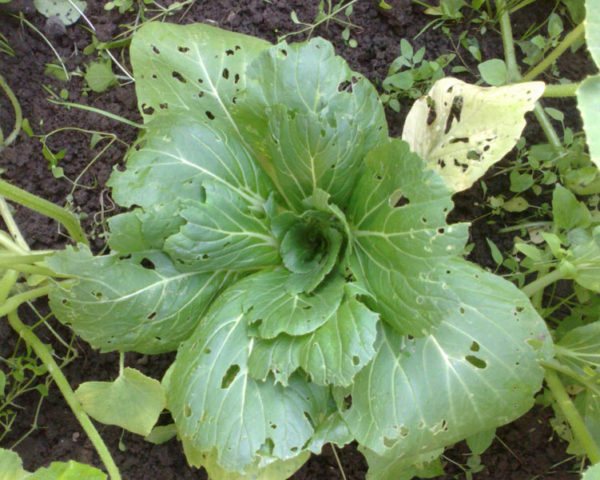

The cruciferous flea makes large holes in the leaves, which slows down growth.
One of the popular ways of dealing with cruciferous flea beetles is vinegar 9%. A glass of vinegar is poured into a bucket of water and cabbage leaves are sprayed. Of the chemicals, Kinmix has proven itself well.
Another dangerous enemy is the cabbage whitefish. It is best to destroy it in the initial stage. To do this, periodically you need to check the back of the leaves of Pak-choy cabbage and neighboring plants for the presence of egg-laying and remove them. With an adult caterpillar, it is much more difficult to fight. From folk remedies against this pest, ash, infusion of tobacco or wormwood are used.
You can make a mustard infusion. For 100 g of mustard powder, you need to take 10 liters of water, leave for several days, then dilute it by half.
Garden slugs and rain snails can significantly spoil crops. Usually they are harvested by hand or bait from alcoholic infusion and bran is installed.
Pak-choi is resistant to most diseases and often gardeners and gardeners manage to avoid them.
Care rules
Pak Choi should not be grown as a follow-up crop after plants such as cabbage, radish, and other crucifers. The cabbage root system is located in the surface layers of the earth and does not deepen more than fifteen centimeters.
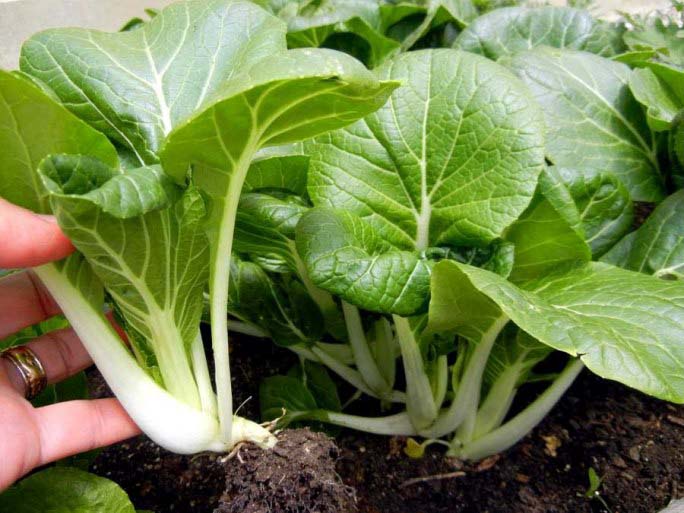

It is very important during the growing season of the plant not to process and spray with chemicals and agents that can accumulate in the parts of the pak-choi that are used for food. The process of cross-pollination with Peking cabbage is allowed. Despite the exoticism, Pak-choi is very unpretentious to growing conditions and does not require any special care from the grower.
There are some peculiarities when growing cabbage pak-choy, and if you adhere to them, then the yield will be very high.
- Most importantly, do not forget that Chinese cabbage can shoot and bloom at the stage when daylight hours increase significantly.
- The best growing time is from the end of April. It is at this time that the active formation and growth of the vegetative mass occurs. Plant breeders who plant pak-choy from mid-May risk getting a plant that will bloom and go into the stem as a result. A good time to grow Chinese cabbage is the end of July, when daylight hours are waning and the plant gives a very high yield.
- The basis of care is to carry out weeding activities, which can be replaced by mulching the plants with needles, cut grass, straw or sawdust. It is also important to carry out watering and protective measures against diseases and pests in a timely manner.
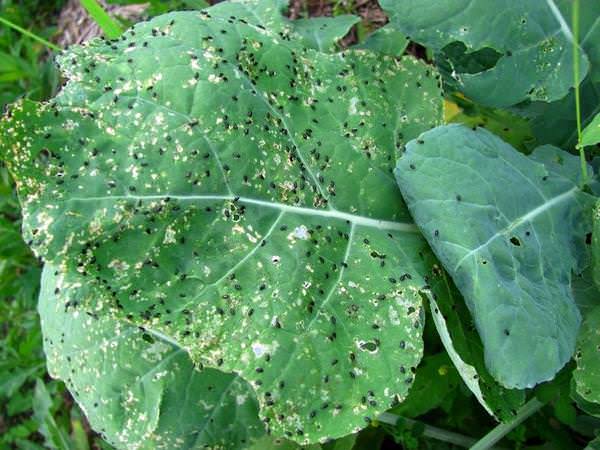

Application
Cabbage is primarily used in cooking. Pak-choi has all parts edible - both roots and leaves. It is fried, stewed, baked with vegetables and meat, used as a side dish.
Heat treatment kills many nutrients. Therefore, the best way to eat cabbage is fresh salads, which are sources of vitamins. Bell peppers, carrots, ginger, sesame and other ingredients go well with Pak-choi. Vegetable salads are seasoned with lemon juice, olive or sunflower oil.
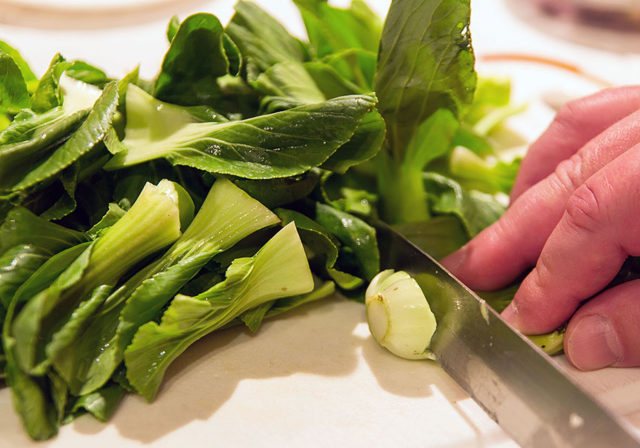

Chinese cabbage is convenient and easy to peel and cut
Before cooking, the cabbage leaves are separated from the petiole, then chopped or chopped. The latter is cut into circles.
In addition to cooking, Pak-choi is used in folk medicine. It is believed to have anti-inflammatory, diuretic, laxative properties. The juice and fresh cabbage leaves accelerate the healing process of wounds and burns. The vegetable helps fight constipation, makes bones strong, and prevents the development of Alzheimer's disease. Due to the content of B vitamins, it has a positive effect on the nervous system.
Chemical composition and calorie content of bok choy
Cabbage is rich in calcium, iron, phosphorus, soft texture and delicate aroma. Chinese mustard is rich in minerals and contains a high percentage of vitamin C, carotene. It contains slightly less carbohydrates and sugars than ordinary cabbage. In order to understand how useful cabbage is, it is enough to study the following information:
- Vitamins and minerals contained in bok-choy provide the body's daily need for nutrients. They will help boost your immunity and health.
- Cabbage is rich in crude fiber, which prevents the build-up of blood plasma cholesterol. This makes the blood vessels flexible and elastic.
- The carotene content of cabbage exceeds that of tomatoes, beans and melons. Vitamin C in Chinese mustard promotes the metabolism of skin cells, which increases their elasticity and promotes rejuvenation. Pigmentation disappears, the amount of hardened skin decreases.
- Thanks to vitamin C, a "hyaluronic acid inhibitor" is formed in the body, it has an anti-cancer effect, "bad" cells die off.
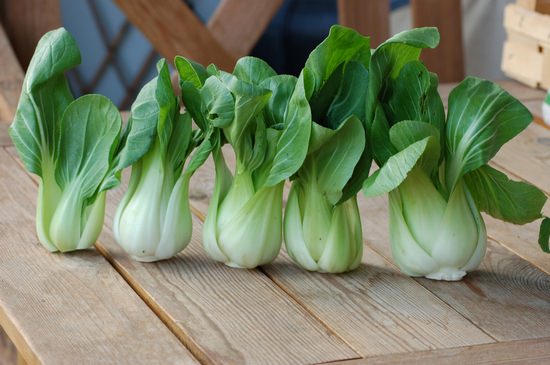

Bok choy cabbage is rich in calcium, iron, phosphorus, it has a soft texture and delicate aroma.
One hundred grams of kale contains:
- 15 kcal of energy;
- 1.5 g of proteins;
- 0.3 g fat;
- 2.7 g carbohydrates;
- 43.6 g of folic acid;
- 1.1 g dietary fiber;
- 280 mcg vitamin A;
- 1680 mcg carotene;
- 0.02 mg thiamine;
- 0.09 mg riboflavin;
- 0.7 mg niacin;
- 28 mg vitamin C;
- 0.7 mg vitamin E;
- 90 mg calcium;
- 36 mg phosphorus;
- 178 mg of potassium.
It can be concluded that collard greens are just a storehouse of vitamins and minerals.
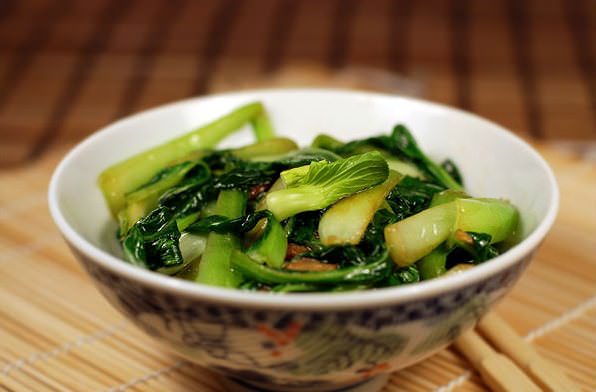

Collard greens are actively used in cooking
Popular varieties
In Russia, this crop is grown recently, so there are not so many zoned varieties:
- Alyonushka is a precocious variety with a medium-sized leaf rosette. The petiole is fleshy, of medium length, wide, green.
- Vesnyanka is an ultra-early ripening leaf variety for open and protected ground. Seedlings appear on the 3-4th day, the first harvest in 20-25 days. The rosette is semi-raised, densely leafy, up to 35 cm high
- Swallow is an early ripe petioled variety of Chinese cabbage. Shoots are juicy, white, fleshy. The mass of plants can reach 1 kg or more, with more than half of it being petioles.
- Swan is a mid-season (40–45 days) variety. Erect leaf rosette, up to 40 cm in diameter and up to 50 cm in height. Plant weight up to 1 kg. Petioles are bright white, up to 35 cm long, make up up to 80% of the plant mass. The variety is relatively resistant to early steming, to unfavorable weather conditions, suitable for thickening planting.
- Pava is a mid-season hybrid of Chinese and Peking cabbage. Combines large leaves and wide, dense, crispy petioles.The leaves are bright green, the petioles are white, fleshy, juicy, without fibers. Stalk resistant, so the variety can be sown at any time. Plants are very decorative, keep well after cutting.
Photo gallery: varieties of Chinese cabbage
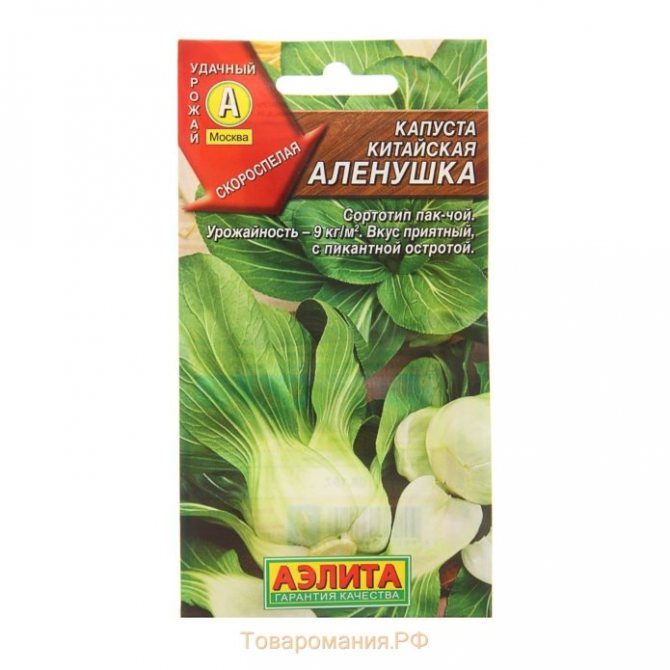

Alyonushka is able to give two crops per season
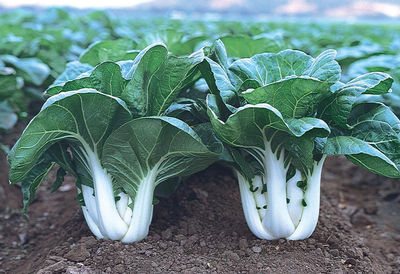

Ultra-ripe Vesnyanka is suitable for open and protected ground
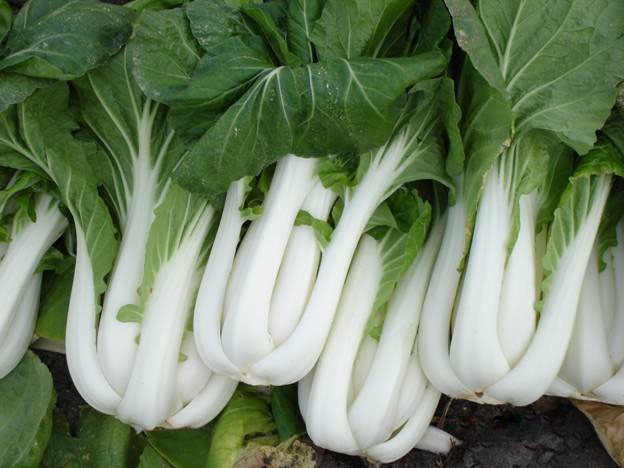

The swallow is prized for its juicy fleshy petioles
For growing outdoors in cold regions (in the Urals and southern Siberia), early maturing varieties are recommended in order to get two or more harvests per season almost unprecedented for these places. In cool summers and in cool climates, seeds can be planted throughout the growing season. In hot climates, it is better to choose flowering-resistant hybrids for planting.

